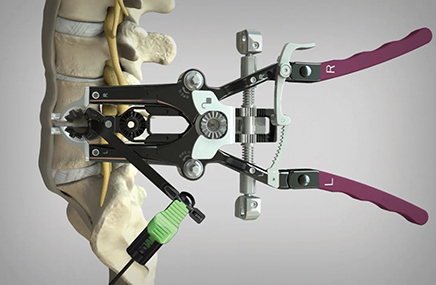Infuse Medical is surrounded by something of an air of mystery. The firm doesn’t say much about its clients or its people. It also doesn’t say much about its mission, beyond a few simple paragraphs on its web site, where the company calls itself “much more than a creative agency” and “much more than a software company,” referring to the agency’s mix of technical and creative skills. Indeed, one senses that the last thing Infuse would ever want to do is toot its own horn in any public venue.
That seemingly low-key approach may have more to do with the nature of Infuse’s business than with the people who carry that business out, according to the agency’s president and founding partner Jordan Erickson. “I wouldn’t say that everybody here is calm,” he says. “Maybe that can be attributed to the little microcosm we work in.”
The “little microcosm” to which he refers is the digital side of the medical device business—an area in which Infuse is one of the biggest players. While the agency doesn’t list client names, it does note on its site that it works with 100% of the Fortune 500 medical device companies as well as with 75% of the Fortune 1000 medical device companies.
And it’s experienced an impressive spike in business over the course of its six years: from 73 completed client projects in 2007 up to 455 in 2012. The agency also covers a wide technological range, with assignments that range from 3D/motion graphics and mobile applications to e-learning programs to Wii/Kinect tchotchkes. During the last year, it was singled out for acclaim for a series of mobile apps it created for Medtronic.
In terms of staff, Erickson says that the firm employs 42 full-timers, up from 28 at the end of 2011. Revenue for 2012 came in “north of $5 million” and he notes that current projections “look pretty good for us to be there again.” Revenue growth in the 20% range is “attainable.”
Erickson opens up a bit more when he starts to discuss bigger-picture concerns for the industry rather than the specific details of his company. For example, one major issue he is concerned about is the rising tide of government regulation and how it promises to affect the healthcare business—and, by extension, his own. “Everything the government is doing is eating into margins,” he says.
But adapting to outside contingencies—whether economic or technological—is something that Infuse is comfortable with. One example: Several years ago, when it started to become clear that the iPhone and iPad were about to change the world, the agency principals “sat down and decided, ‘Okay, we’re going to be as much of a technology enabler as a creative services provider,’” Erickson recalls. “From there it was a matter of how we would do it intelligently and in a way that’s metric-based. If somebody is putting $25,000 into a creative opportunity, he needs to know what kind of ROI he’ll get back.”
Infuse continues to benefit from that decision today, just as it does from the decision it made to set up shop in Salt Lake City. “The reason we’re here is for the people,” Erickson says succinctly, pointing to the three nearby universities as well as the region’s reputation as a cradle for digital animation.
As for the future, Erickson avoids making any specific predictions. Afer considering it for a moment, he says, “Infuse Medical will continue to be a creative services agency that does phenomenal work.” That might not be particularly revelatory, but it’s true to what the agency is.
From the July 01, 2013 Issue of MM+M - Medical Marketing and Media








